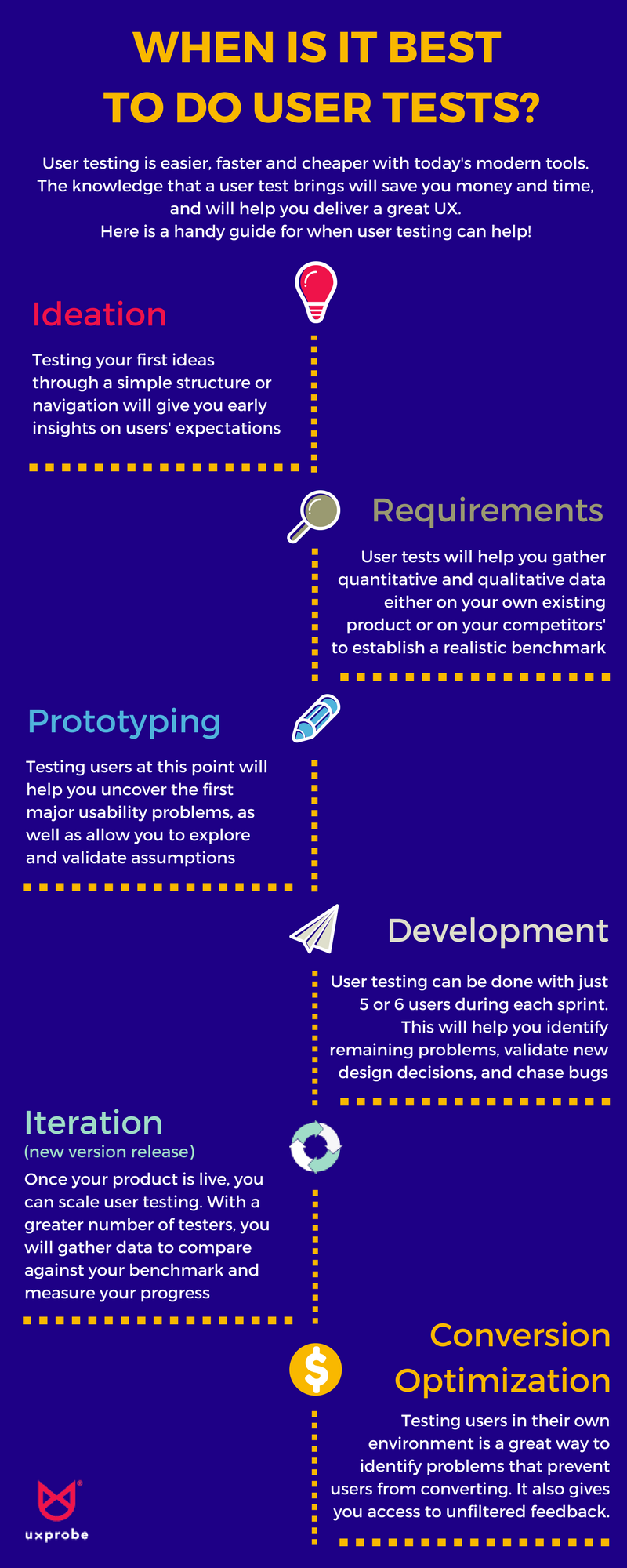With so much time and money invested to build a website or service, it’s important to minimise any possibility of making costly mistakes. Given the competitive landscape online, all sorts of tests need to be performed to make sure the best user experience is delivered. But ultimately, we want to know how actual users feel about the website, and whether these visitors leads to conversion and in the long run, satisfied customers.
As such, user testing is always helpful in collecting valuable feedback from real users. By performing such tests, you’ll understand how users behave on your website and have first hand observation of their reactions when performing certain tasks on your website. You’ll receive unfiltered responses that you can work with to make critical improvements, and potentially avoid a UX disaster! And with modern user testing tools, like UXprobe, user testing is now easier, faster and cheaper. Results can now be delivered inexpensively and it’ll bring benefits to your project in a matter of days!
However, there is a common confusion when it comes to user testing: When is it best to do user tests? At which point of the project do we do user tests? Is user testing really necessary?
To get the answers to these questions, read on to the infographic to know when are the right moments you should do user tests!

ABOUT THE AUTHOR

Jonathan Chua
Assistant Content Marketing at UXprobe


